In Fall 2020, O-lab welcomed Sydnee Caldwell as one of its newest affiliates. To introduce her work, we have spotlighted a few of her recent projects, along with their potential implications for understanding the gig economy and the low-wage labor market.
Sydnee Caldwell joined the UC Berkeley faculty in July 2020 as an Assistant Professor in the Department of Economics and the Haas School of Business. Her appointment marks a return for Sydnee, who also attended Cal as an undergraduate, earning a dual bachelor’s degree in applied mathematics and economics in 2008.
Her recent research focuses on different forms of worker compensation and on how uncertainty around the Earned Income Tax Credit (EITC) affects behavior and outcomes for low-wage workers. Prior to returning to Berkeley as a faculty member, Sydnee served as a post-doctoral researcher at Microsoft Research New England. She earned her PhD in economics from MIT in 2019.
Tax Refund Uncertainty: Evidence and Welfare Implications (with Scott Nelson & Daniel Waldinger)
In this 2021 working paper, Caldwell and her colleagues focus on how low-income individuals understand and predict the amount of earnings they are likely to receive through the Earned Income Tax Credit (EITC). The EITC is one of the country’s most powerful anti-poverty programs, and for those low-income families who receive it, the credit can make up a substantial portion of their total annual income. Accurately anticipating the size of the EITC is therefore a crucial part of household budgeting and decision-making for these families. Due in part to the complexity of the tax code, however, it can be very difficult for filers to anticipate their tax liabilities and credits.
To understand the scale of this problem, as well as potential policy solutions, Caldwell and her colleagues used a combination of administrative tax data, credit bureau data, and survey data on individuals’ tax refund expectations. The data was collected through the Volunteer Income Tax Assistance (VITA) tax preparation centers in Boston to gather information about individuals’ expectations of their refund amounts. A low-income tax filer’s expectations were then compared to the actual refunds they received. When asked to predict their EITC refund amount within a $1,000 interval, the authors found that a quarter of individuals were “not certain at all” that their prediction would be correct.
Their research suggests that uncertainty impacts how people choose to consume and borrow; those who were more uncertain going into tax season tended to repay less of their credit card debt after they received the refund, for example. The refund uncertainty distorts recipients’ consumption-savings choices and causes a 10 percent loss in the the value of the EITC.
Uber vs Taxi: A driver’s Eye View (with Joshua Angrist & Jonathan Hall)
As the gig economy continues to grow, understanding worker compensation models and worker preferences will be critical to crafting fair rules and payment structures. In this paper in the American Economics Journal in Applied Economics (forthcoming 2021), Sydnee Caldwell and her co-authors partnered with Uber to compare drivers’ preferences under two different potential compensation models. In the first, drivers pay a fixed payment independent of their earnings; this compensation structure is the standard model for most conventional taxi drivers. In the second model, rideshare drivers pay a portion of their earnings per ride, a commission that Uber charges drivers for every ride drivers provide; this second model is the standard model for most “rideshare” programs. Caldwell and her colleagues find that a taxi-like model is (a) more efficient, and (b) results in higher net wages for drivers, since drivers keep any income they make in excess of the fixed payment. To explore if Uber drivers would prefer the taxi-like option, the authors partnered with Uber to offer drivers an opt-in taxi-like contract where they could pay a fixed payment instead of the usual Uber commission fee per ride. Sydnee says, “we find that drivers who would have earned higher wages under the taxi-like model don’t opt in. Our explanation for this is that drivers are loss averse.” In other words, drivers are averse to the scenario where they cannot make enough trips to cover the fixed payment and will give up the possibility of higher earnings in favor of greater flexibility to work as much or as little as they want. The authors find that drivers were often uncertain about how much they were going to work in a given week, which likely contributed to their aversion to the fixed payment since they were unsure about their ability to drive enough to cover the lump sum cost.
The results of this paper will be important in understanding and creating rules to govern “gig jobs” and other emerging labor markets where workers can choose how much to work. There is a serious ongoing policy debate about how gig workers should be classified---whether as independent contractors or as employees---and how they should be compensated. “When we started the project,” Sydnee said, “we expected to see that drivers who drive a relatively high amount of time would prefer the “taxi-like” scheme, and that drivers who drive a relatively low amount would not. However, we found that…these taxi-like schemes are perhaps less popular than you would expect, even among drivers who would have benefited a great deal.”
Outside Options, Bargaining, and Wages: Evidence From Coworker Networks (with Nikolaj Harmon)
In Caldwell’s job market paper, she sought to understand the extent to which changes outside of an individual's labor market impact the wages that they may earn at their current job. For example, would a change in a firm competitor’s demand for workers, or a change in their salary ranges, influence wages at one’s current employer?
Using employer/employee data from Denmark, Caldwell and her co-authors find that consistent with economic theory, demands for labor at one firm will induce greater firm-to-firm mobility and will drive up wages at competing firms. These increases were driven largely by information sharing, and were most pronounced among those in the top half of the skills distribution. Access to information about increases in demand for workers at one firm is critical for workers in another firm to leverage the information and increase their wages at their current firm. An interesting finding of this paper - and one which Sydnee hopes to explore further in the future - was that within each skill group, women benefit less than men from information about outside options. Caldwell said there are many reasons why women might be getting a smaller bump from outside options, including the potential that they are less inclined to negotiate or are punished for negotiating. These options are the subject of a growing literature in economics, and questions Caldwell hopes to look into more in the future.






